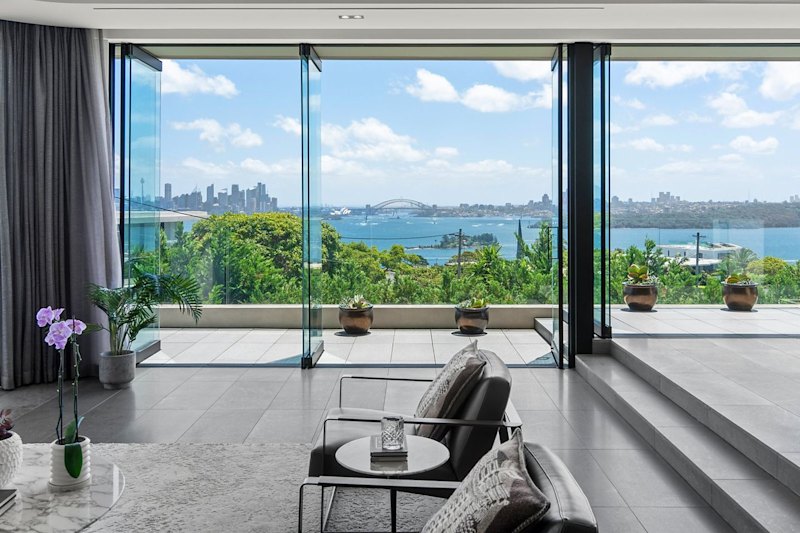First-home buyer beware: Five hidden costs of buying a home
Getting your foot into the door isn’t cheap, but sometimes it’s where the money is spent that comes as a shock to first-home buyers.
It’s not over once the deposit has been saved and the winning offer made. Experts have identified five areas where hidden costs might be lurking, and how a buyer can avoiding paying more than they need to.
1. Pre-purchase research
Anna Porter, a property valuer and principal at strategic property investment company Suburbanite, said budgeting for pre-purchase inspections is important.
“There’s a whole range of reports you can get – you can spend $5000 just on due diligence,” she said.

What could look like a minor issue may cost more in the long run. Photo: Erin Jonasson
Not doing the research can prove costly. Mortgage Choice CEO John Flavell said it was vital to conduct proper pest and building inspections.
- Related: How much does conveyancing cost and what is included?
- Related: A 20 per cent deposit has become the new norm
- Related: How to balance head and heart when house-hunting
“It is a small amount to pay for peace of mind and it can help you to avoid buying a property with structural faults or insect infestations,” he explained.
CM Lawyers head conveyancer Alex Sapounas said that trying to avoid buying quality building reports was also a common error.
“Unfortunately there’s no fallback position with major structural flaws.”
Strata reports were also very important, he said, particularly regarding special levies and changes to the standard bylaws.
2. Conveyancing fees
Some first-home buyers are surprised to discover they need to engage a conveyancer, or are alarmed by the price.
Rules around conveyancing vary from state to state, but Mr Sapounas said first-home buyers should be talking to a conveyancer at the start of the buying process.
 Mr Sapounas said some buyers didn’t even have the contracts reviewed prior to bidding at auction.
Mr Sapounas said some buyers didn’t even have the contracts reviewed prior to bidding at auction.
He said it was common to see first-home buyers making mistakes that could cost far more in the long run than the $1500 to $2000 conveyancing fee.
Many did not understand the difference between pre-approval and actual approval, how much of a deposit they need, and when they could pull out of the purchase of a property.
“A lot of first-home buyers don’t even have the contract reviewed prior to auction,” he said.
3. Government and bank fees
Mr Flavell identifies stamp duty, the property transfer fee, and mortgage registration fee as government costs new buyers need to know about.
When it comes to home loans there’s the loan application fee, ongoing bank fees and the lender’s property valuation to consider.
 A slowing market might impact whether on not a buyer opts for LMI, or a 20 per cent deposit. Photo: Dominic Lorrimer
A slowing market might impact whether on not a buyer opts for LMI, or a 20 per cent deposit. Photo: Dominic Lorrimer
Another potential expense is Lender’s Mortgage Insurance – LMI – which protects the lender from losing money if the borrower defaults on their loan, and the sale of the property doesn’t cover the money owed.
Generally, it’s a condition of borrowing with less than a 20 per cent deposit, and the cost can be included in the loan amount.
Analysis from financial comparison site Canstar shows that first-time buyers who opt for a 10 per cent deposit and LMI as opposed to taking longer to save a 20 per cent deposit could also wind up paying more overall.
It depends on the growth in property values, with 3.83 per cent annual growth being the break-even point for a $500,000 purchase. If growth is slower, buyers could be better off saving the 20 per cent deposit, but if the market moves faster, LMI is outweighed by capital gains.
4. Moving in, and moving tenants in
Ms Porter said first-time investors often don’t plan for professional cleaning fees.
“When a vendor moves out, there’s not a requirement for how clean the apartment has to be,” she said.
If the property is left in a passable condition, but not clean enough to meet the standards of a rental property, it might require a professional cleaner, and a $500-plus outlay.
Dixon Advisory’s head of advice Nerida Cole explained there could be quite a big “gap in expectation” for new buyers, in terms of what they’re prepared to live with compared to what a tenant expects.
“If you want to have a good tenant, you want to make sure property is presented well.”
 New homeowners may be left to foot the cleaning bill when the vendor moves out. Photo: Steven Siewert
New homeowners may be left to foot the cleaning bill when the vendor moves out. Photo: Steven Siewert
She added that the early period can be a pressure point for investors who expect to receive rent straight away.
“There can be a bit of a delay in the cash flow coming in from the rent. Up front there’s the property manager costs, the campaign to get a tenant – but you are paying interest from day one.”
Owner-occupiers also need to manage expectations and expenses. “It might take you two years to furnish the house properly, rather than racing in and trying to make it look like a Vogue magazine.”
5. Landscaping and repairs
Ms Porter recommends keeping aside $4000 for $5000 as a maintenance slush-fund.
“You can buy a property and suddenly the hot water dies, or the airconditioning dies and you have to replace it,” she said.
Ms Cole said the cost of upkeep for a backyard can come as a surprise for buyers upgrading from an apartment.
“Plant trimmers, lawnmowers, it does add up. When you’re a new home buyer, you don’t have much cash up your sleeve.”
 There can be some surprises in moving from an apartment to a free-standing house with a backyard.
There can be some surprises in moving from an apartment to a free-standing house with a backyard.
Landscaping can also be costly, especially for new builds. Ram Venkatagiri, from Financial Quotient, says that the price of structures like retaining walls can come as a shock to some buyers.
“Sometimes they cannot be determined by the builder at outset, until they perform site works after the building contract has been entered into,” he said.
He noted that blinds, curtains and security grilles aren’t always included in the price of a house and land package, adding thousands to the overall cost.
We recommend
We thought you might like
States
Capital Cities
Capital Cities - Rentals
Popular Areas
Allhomes
More







